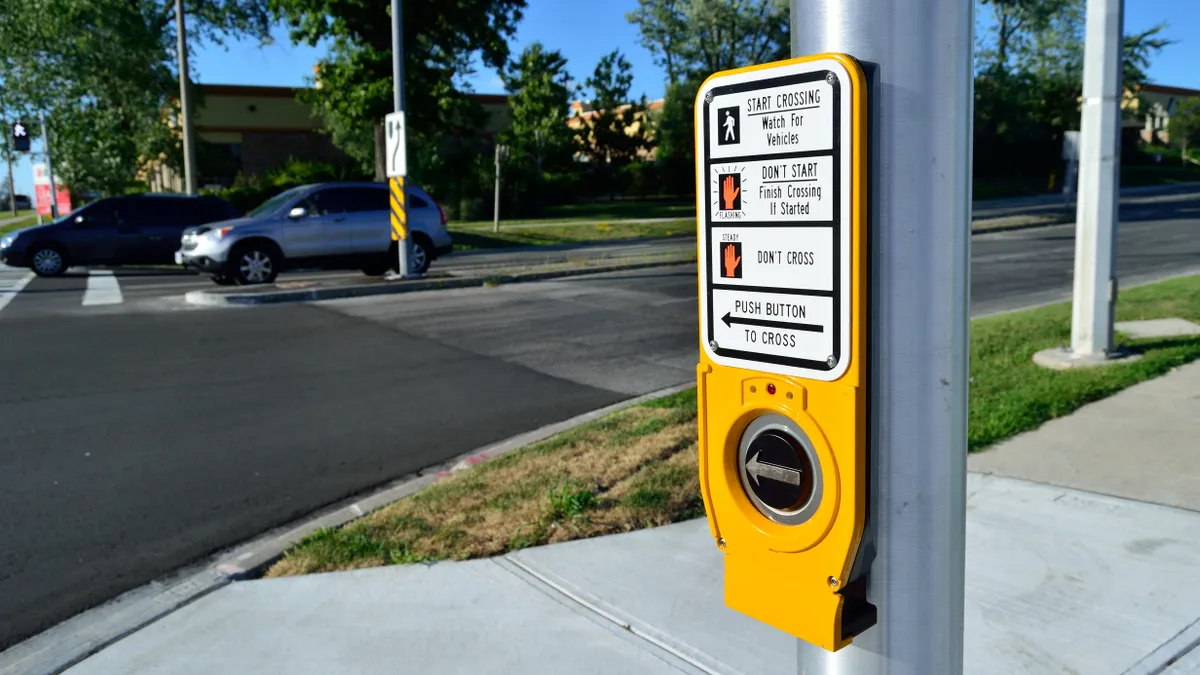Dive Brief:
- Toyota Motor Corp. subsidiary Woven Planet Holdings and the New York University Tandon School of Engineering research team recently released an open-source dataset used to test technology that helps visually impaired pedestrians, in addition to autonomous vehicles and delivery robots, better navigate cities.
- The dataset contains over 200,000 outdoor images taken over the course of a year from a 2 km-by-2 km section of a neighborhood near the NYU campus. Academic researchers are using it to test visual place recognition (VPR) technologies that can improve the accuracy of personal and automotive navigation, which can support independence for a range of users.
- The dataset contains “side-view” images of sidewalks and storefronts, in addition to “forward-facing imagery,” which helps researchers gain a more holistic view and test beyond traditional “mono-perspective sources," an NYU press release stated. Those views can help visually impaired people navigate sidewalks from a 360-degree perspective, in addition to helping delivery robots that have to move front, back and side-to-side, according to Chen Feng, an assistant professor who leads the team at NYU's Automation and Intelligence for Civil Engineering lab, which developed the dataset.
Dive Insight:
The researchers captured changes in the same environment over a year, helping to improve VPR performance when it's faced with changes across seasons or the built environment. The researchers also anonymized the images, protecting the privacy of pedestrians and cars, according to NYU. The project then tested whether that anonymization affected the VPR technology's performance.
The VPR technologies tested had more difficulty with side-view images than with forward-facing images, the researchers wrote. Anonymization did not harm performance, however, and "could even bring marginal improvements," they said.
The effort uses images originally provided by CARMERA, an automotive mapping company that Woven Planet acquired in 2021.“It’s gratifying to see our data, which is core to our commercial mapping products, being used to help researchers around the world develop tools that will ultimately make mobility more accessible and equitable for all," Ro Gupta, senior director at Woven Planet and head of the company’s Automated Mapping Platform North America team, said in a statement.
New York and other cities can be a true “urban jungle” for people with disabilities to navigate, said John-Ross Rizzo, an NYU professor of biomedical, mechanical and aerospace engineering, and this type of technology and approach can help tackle those challenges. "With 360 [degree] cameras and some images… we have the potential to digitally map these spaces very efficiently and to have these robust digital models," Rizzo said.
In many cities, critical safety infrastructure, like pedestrian signals, is not accessible for people with disabilities. A federal judge ruled last year, for instance, that New York City must make all of its crossing signals accessible to visually impaired pedestrians by 2036. The ruling followed the finding that less than 5% of the city’s intersections included crossing signals with audible or tactile features, a violation of the Americans with Disabilities Act and the Rehabilitation Act, Courthouse News Service reported.
In Baltimore, three wheelchair users were among a group of people who filed a lawsuit against the city last year for “widespread and ongoing" violations of federal accessibility requirements, which they say make it difficult for people with mobility disabilities to access sidewalks and curb ramps. In Chicago, the U.S. Department of Justice joined a lawsuit against the city last year alleging discrimination due to a lack of accessible pedestrian signals for people who are blind, have low vision or are deaf-blind. Since 2006, the city had only equipped 15 of its 2,7000 intersections with visual crossing signals, according to the DOJ in April 2021.
Eventually, the information gathered in the dataset could help inform decisions around city infrastructure and local policy, according to Rizzo. "We like to use the inclusive design adage, ‘What’s inclusive for some is inclusive for all.’ While that’s true on the consumer side, it's [also] so true on the smarter city side,” Rizzo said.












